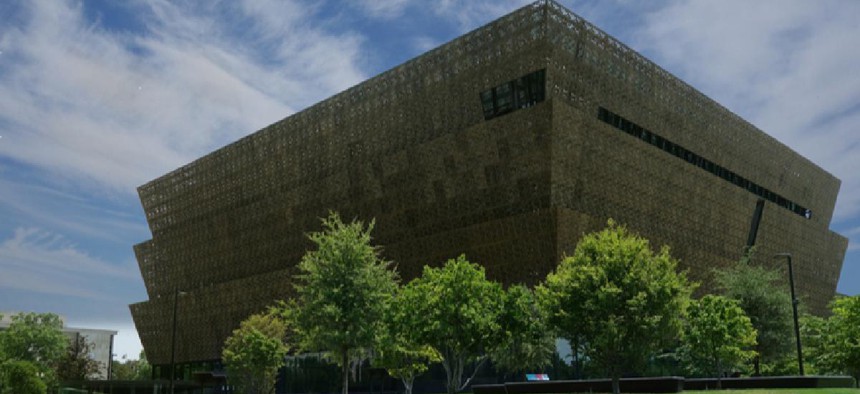D.C museum rethinks visitor tech with social distancing in mind

User apps are a key for African American History and Culture museum's post COVID-19 exhibits, according to a top developer.

One of the most popular museums in Washington, D.C. is leveraging DevOps to help it re-imagine how its patrons interact with exhibits when it re-opens, according to its one of its top app developers.
The Smithsonian's National Museum of African American History and Culture (NMAAHC) is developing a strategy to convert elements of its in-person interactive exhibits to mobile apps, moving them onto personal devices to help with social distancing concerns, said Rayvn Manuel, senior application developer at the museum.
That strategy, she said in remarks during a Sept. 3 ATARC webcast, may become permanent in a post COVID-19 world that could alter expectations for public spaces. That new world, she said, may mean minimization of touch interaction with electronic panels that supplement exhibits inside the museum, as well as limit the number of people that can get near those physical exhibits.
"In small spaces, you can't social distance," she said. That means museum attendees can't cluster around exhibits that have interactive touch screens that offer data about displays or "discovery centers" that provide central screens to access a range of data, she said. "We're playing with other technology, like using mobile device QR codes" and adapting augmented reality apps like those used in commercial games such as Pokemon Go that will allow more distancing, as well as opportunities to get information away from settings that concentrate people in one place, she said.
The NMAAHC, on the National Mall in downtown Washington, tallied two million visitors in 2019, according to the Smithsonian, putting it fourth in attendance among the institution's 21 museums. Like the majority of the Smithsonian Institute's stable of museums in the Washington D.C. area, the NMAAHC currently remains closed to the public.
However, Manuel is developing apps that can assist future visitors, particularly the crowds of younger school-age children with their in-person visits once the facility opens up in the coming weeks or months.
DevOps techniques, said Manuel, are a key to quickly developing alternatives to the popular touch screens and other interactive exhibits in the museum.
Although DevOps development techniques, she said, are instrumental in constructing and rolling out those applications, the nature of the museum's exhibits makes for a complicated environment.
"The development strategies to produce applications are all different," she said, because the museum's exhibits cover a huge range of subjects that come with vastly different historical and explanatory data. "You can't be too prescriptive because of that."
NEXT STORY: FCW Insider: Sept. 4





